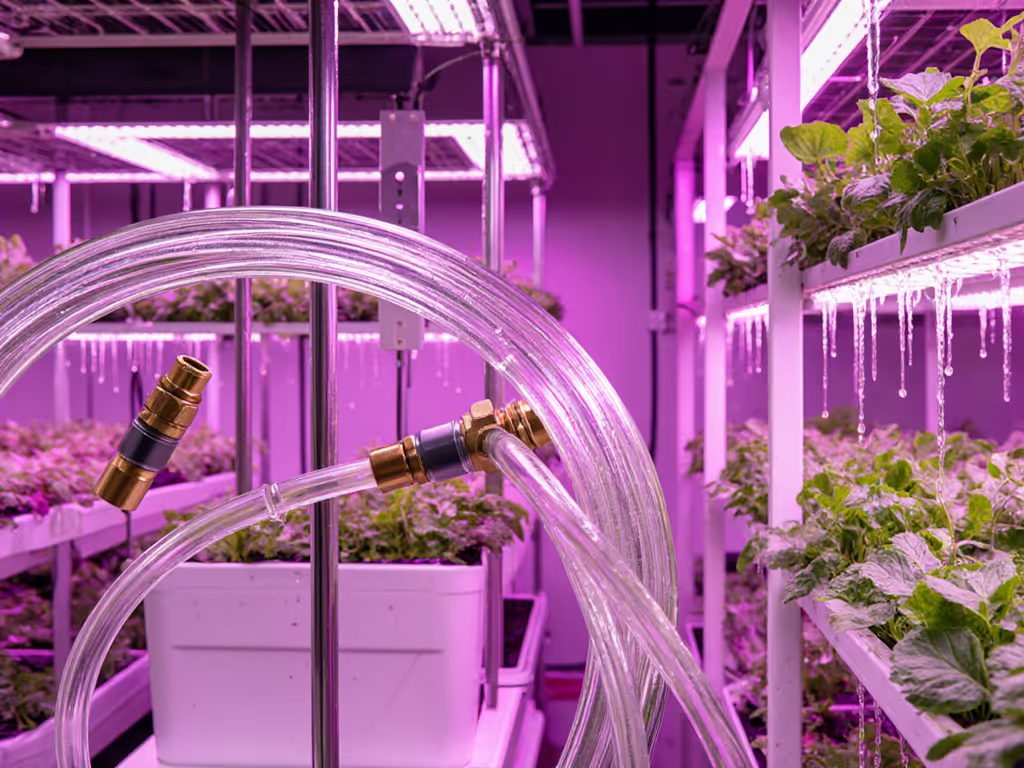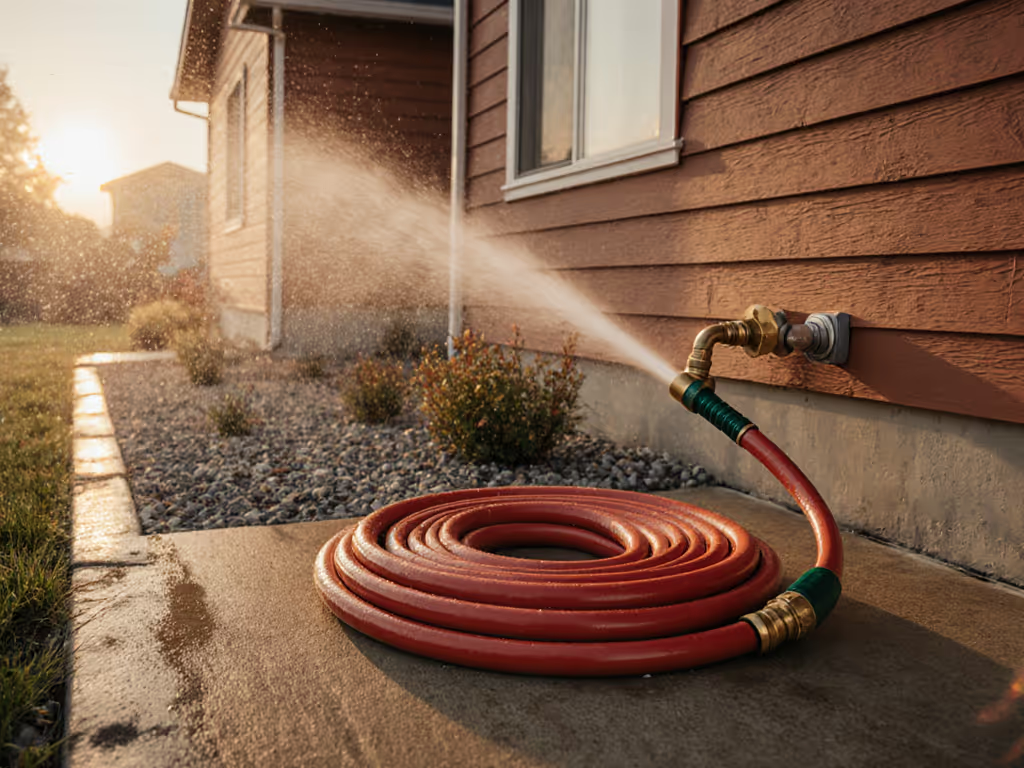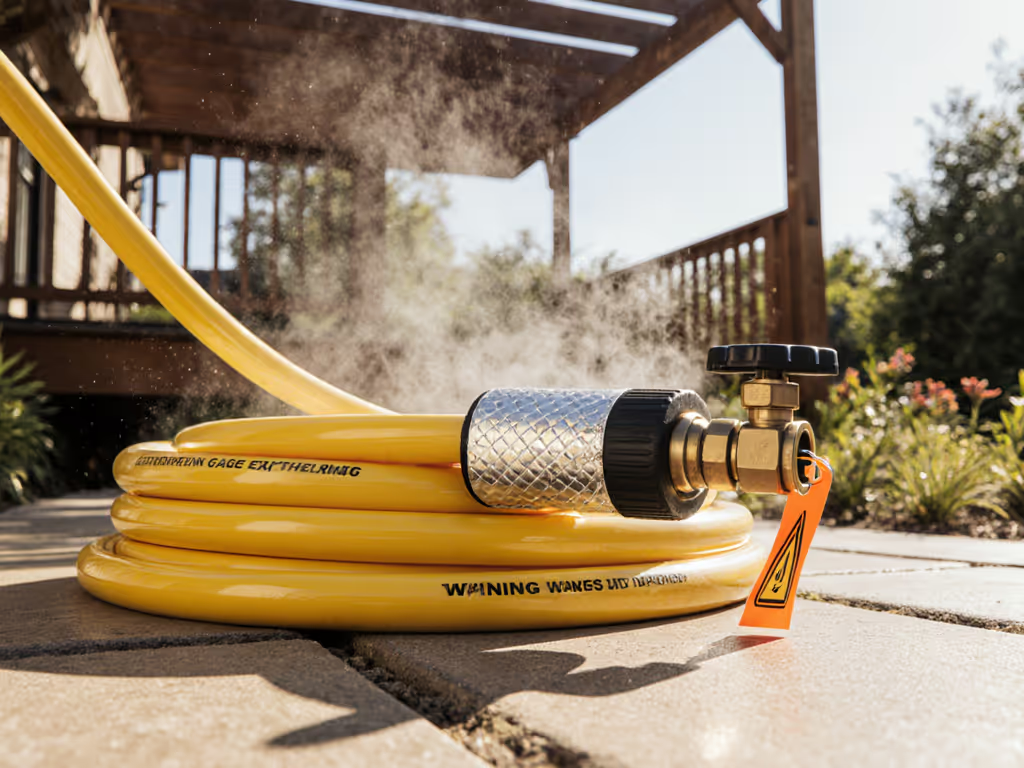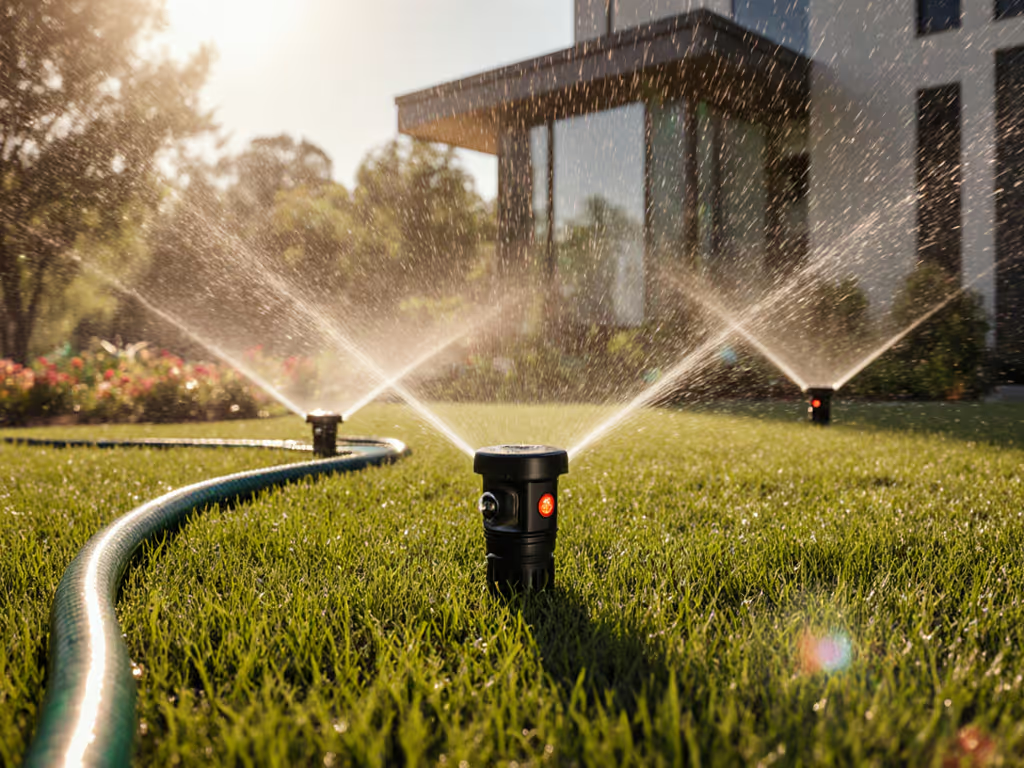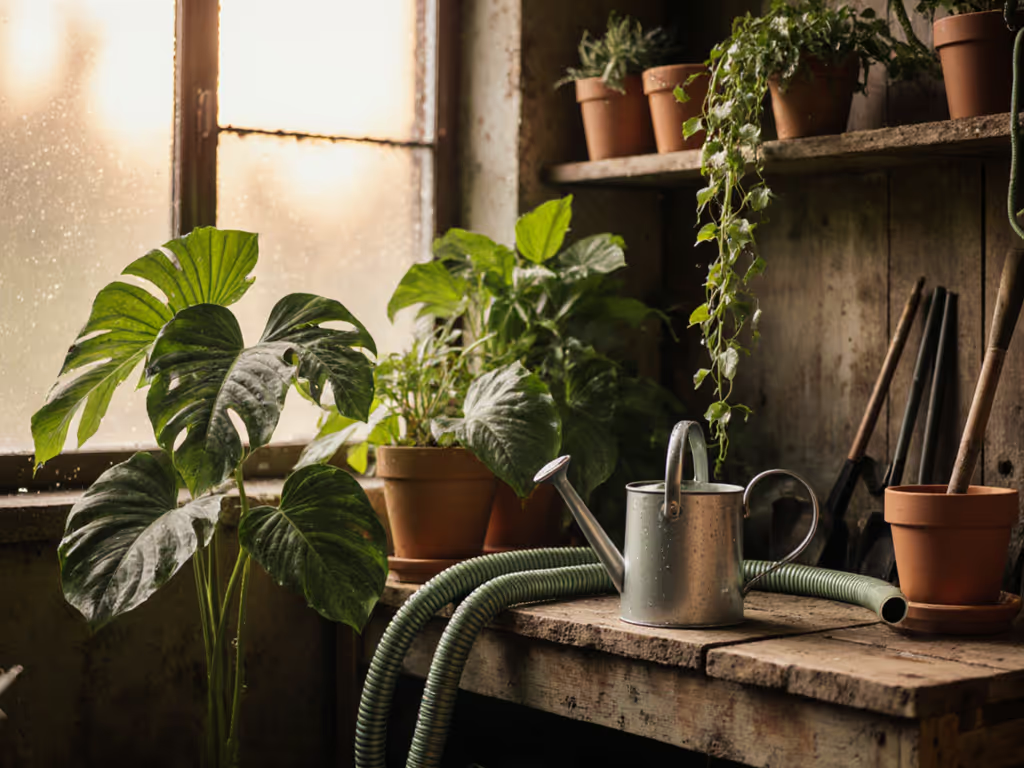
Choosing the Best Hot Water Garden Hose: Safety, Durability, and Why Standard Hoses Fail
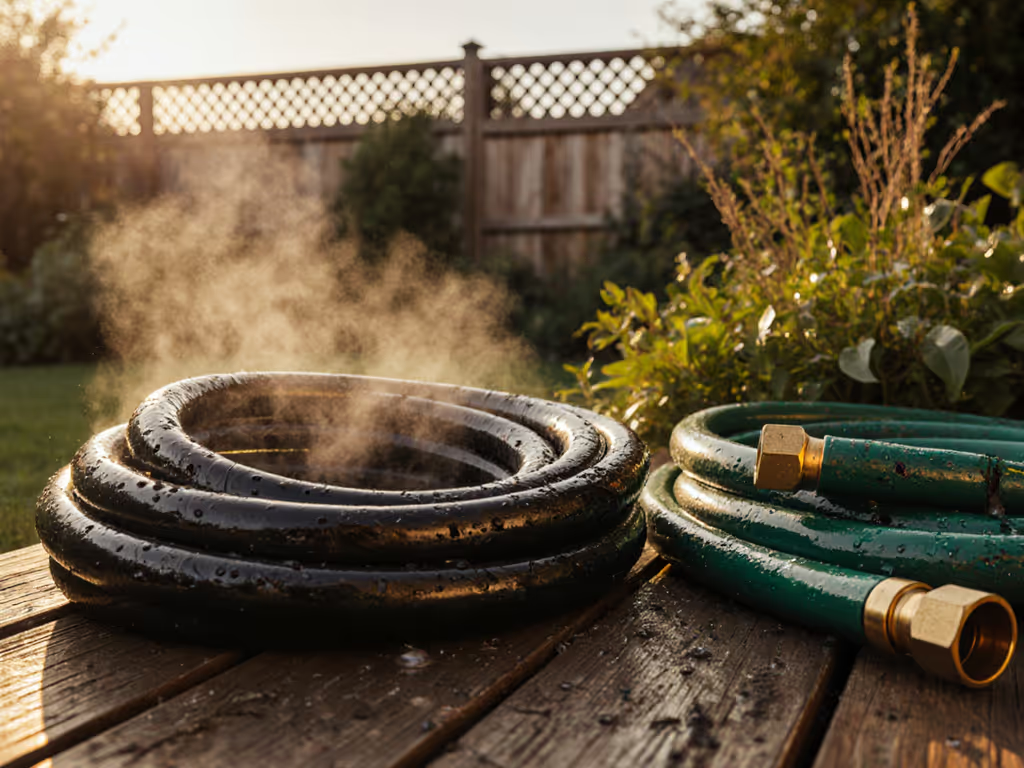
If you've ever tried to use a standard garden hose with hot water only to watch it kink, swell, or worse, burst, right before your eyes, you're not alone. Finding the best garden hose for hot applications requires understanding why most hoses fail and what makes a truly reliable garden hose for hot water. Whether you're washing cars, cleaning decks, or maintaining a commercial pressure washing business, using the wrong hose isn't just inconvenient, it's a safety hazard. Let's build a reliable solution together, from spigot to nozzle map.
Why Standard Hoses Fail with Hot Water
Standard garden hoses are designed for cold water applications, typically up to 100°F. When exposed to hotter temperatures, they often fail in three critical ways:
- Material Degradation: PVC and vinyl hoses soften and swell, weakening structural integrity.
- Connection Failure: Plastic couplings warp, causing dangerous leaks at connections.
- Internal Damage: Heat accelerates the breakdown of inner linings, leading to bursts.
Most homeowners don't realize their tap water can easily exceed 120°F on hot days (especially if the water heater runs through exterior pipes). I've seen countless customers return hoses on Saturday mornings because they didn't know about garden hose temperature limits. After my third return trip (and wasted Saturday), I created a simple compatibility checklist that now lives on neighbors' fridges. Compatibility prevents returns; clarity saves weekends.
Temperature Tolerance: What You Really Need to Know
When evaluating a hose for hot water applications, look for these specific temperature ratings:
- Cold Resistance: Down to -25°F for year-round usability
- Continuous Hot Water: At least 140°F without degradation
- Peak Temperature Tolerance: 160-180°F for safety buffer
Rubber hoses typically outperform vinyl and PVC for hot water applications. A quality rubber hose maintains flexibility across extreme temperatures while resisting the internal breakdown that leads to bursts. When I help customers troubleshoot hot water hose failures, nearly all cases involve hoses rated below 140°F being used with water exceeding that limit. Check manufacturer specs carefully, as many "heavy duty" hoses still have serious temperature limitations.
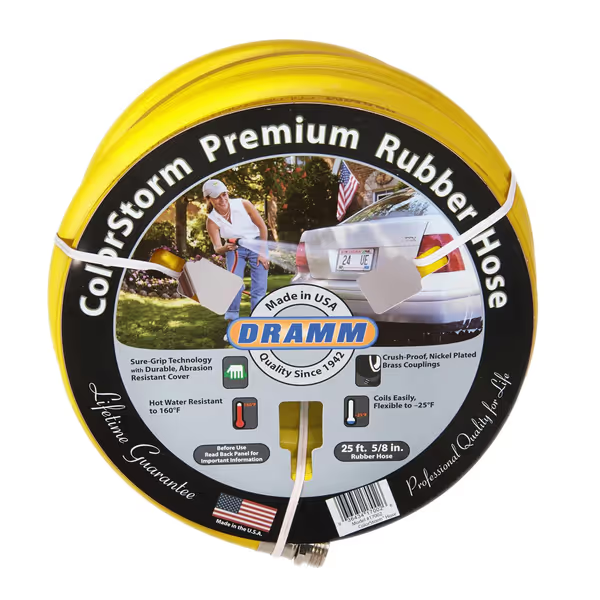
Dramm ColorStorm Premium Rubber Garden Hose, 5/8"x50'
Connection Integrity: The Safety Critical Factor
The weakest link in any hot water hose system is often the connection points. For safe hot water operation, you need:
- Brass or Stainless Steel Couplings: Plastic fittings melt and warp under heat
- Proper Thread Match: Standard 3/4" GHT (Garden Hose Thread) with 11.5 threads per inch
- Reinforced Seals: Dual O-rings or thick washers that won't compress under heat
I've seen too many "pressure washer hose connectors" fail because they weren't actually rated for hot water despite working fine with cold. Ask specifically about hot water compatibility, even if a connector works for cold pressure washing, it may fail dangerously with hot water. Start with the spigot, end with a click-fit finish. If you're unsure about GHT vs NPT vs BSP, see our garden hose thread compatibility guide. This simple decision-tree approach prevents 90% of connection failures.
Building Your Hot Water Hose System
Don't just buy a hose, build a compatible ecosystem. Your complete commercial hot water hose system should include:
- Hot Water Rated Hose: Rubber construction with temperature rating visible on packaging
- All-Metal Fittings: Brass or stainless steel at both ends
- Hot Water Specific Nozzle: Check for temperature ratings on spray guns
- Pressure Regulator: Prevents dangerous over-pressurization when water heats
For RV or boat detailing applications where hot water is essential, verify potable water safety standards too (especially if rinsing food surfaces or pet areas). For the health side, read our drinking-water-safe hose guide. The Dramm ColorStorm hose (made in the USA) is one example that handles hot water up to 160°F while meeting drinking water standards, perfect for washing children's play equipment safely.
Hot Water Hose Safety Checklist
Before connecting your hose to hot water, run through this quick safety checklist:
"Never connect a hose to hot water without verifying its temperature rating first - this simple step prevents burns and property damage."
- Check Hose Labeling: Look for explicit hot water temperature ratings
- Inspect All Connections: Ensure no plastic components that could melt
- Test Gradually: Start with warm water, slowly increasing temperature
- Avoid Direct Sun Exposure: Heat + sun = dangerous pressure buildup
- Install a Pressure Relief Valve: Critical for closed systems like pressure washers To match hose strength with your water source, review our garden hose PSI ratings comparison.
This five-point hot water hose safety checklist has prevented countless accidents in my years of customer support. Many standard hoses marketed as "heavy duty" still lack proper hot water ratings, a clear example of why vague compatibility claims put users at risk.
Creating Your Perfect Hot Water Setup
Your ideal hot water hose system depends on your specific needs:
- Residential Car Washing: 50' rubber hose with 5/8" diameter, brass fittings
- Commercial Pressure Washing: 75-100' heavy-duty hose, 3/4" diameter, commercial couplings
- RV/Marine Detailing: Shorter 25-35' hose with drinking water certification
When building your system, always consider the complete path from water source to discharge point. Many customers overlook how hot water affects not just the hose but also Y-splitters, timers, and backflow preventers in their system. A complete from spigot to nozzle map prevents mismatched components that could fail under heat.
Final Thought: Safety Through Compatibility
Choosing the right garden hose for hot water isn't just about convenience, it's a safety imperative. By understanding temperature limits, material properties, and connection integrity, you'll avoid dangerous failures and create a system that works reliably season after season. Never assume a "heavy duty" hose is automatically hot water compatible, always check the specifications.
Take five minutes now to inspect your current hose for temperature ratings and metal couplings. If you can't find explicit hot water ratings, consider upgrading before your next hot water use. This small investment protects your property, your time, and most importantly, your safety.
Ready to build your perfect hot water hose system? Grab a pen and sketch your watering path from spigot to nozzle (note where hot water will flow), then match every component to that temperature requirement. You'll spend less time troubleshooting and more time enjoying your outdoor space, confident your system won't fail when you need it most.

